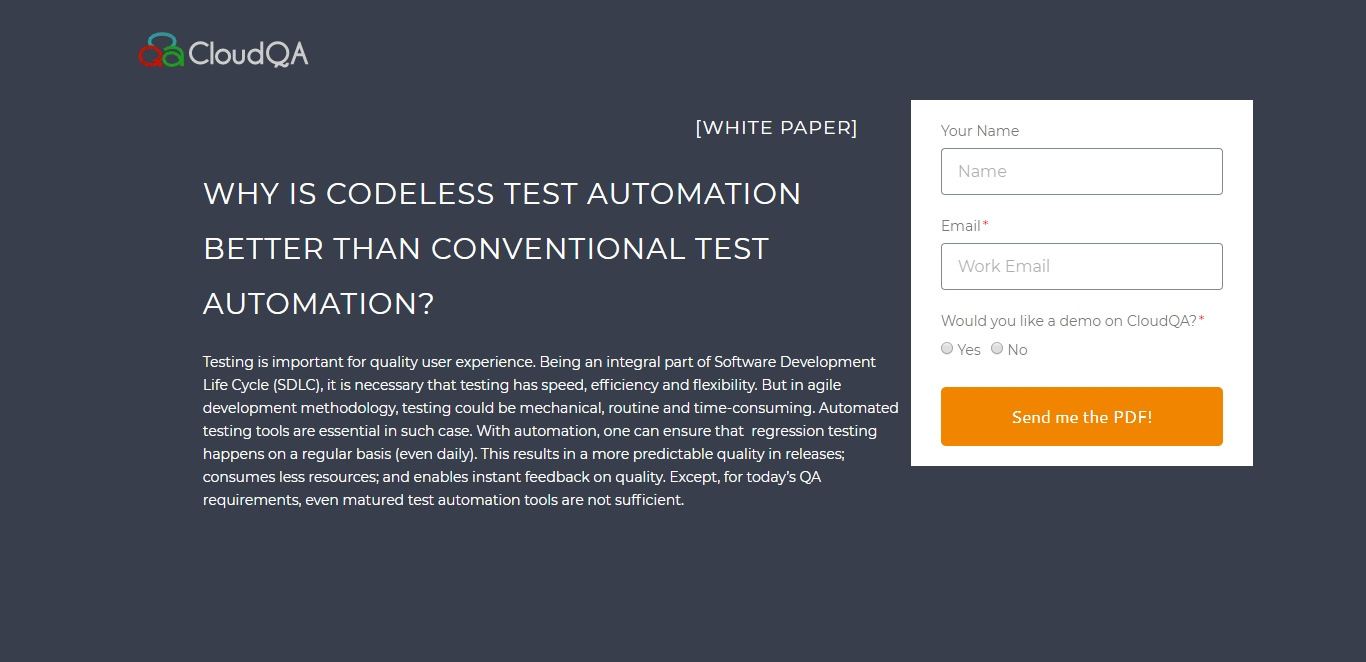Why you can't ignore test planning in agile?
An agile development process seems too dynamic to have a test plan. Most organisations with agile, specially startups, don’t take the documented approach for testing. So, are they losing on something?
A test plan is useful to put discipline into the testing process. Otherwise, it’s often a mess when team members draw different conclusions about the scope, risk and prioritization of product features. The outcomes are better when entire team is on the same page. If your team isn’t planning tests, the problem could be how you perceive the test plan.
A test plan might appear like an elaborate document by the QA, but in agile it is more like a process than a plan. It can be dynamic in spirit and capable of keeping up the sprint velocity. Let’s look the challenges in agile testing and how to overcome them with planning.
The perils of no test planning
It’s a common pitfall when team is focused on a quick burn-down of everything in the bucket of requirements. This way, you can lose time on testing low risk and low priority requirements. And a feature that is more critical for the business may not get the attention it deserved.
The lack of capacity to prioritize comes from limited understanding of the product user and usage. If testers are not able to prioritize what features are top priority to test first, testing becomes a disadvantage for the agile speed.
Absence of test planning can translate to inadequate team communication on the goals of testing. This can dilute the purpose building a product. If test planning is so important how can you incorporate it for your product?
Why agile test planning
For agile, test planning should map risks and rewards of testing any feature. In order to achieve this, tester should communicate the business importance and priority of features they would be testing in the sprint. Testers should evaluate the acceptance criteria rather than copy-pasting it. This allows testers to examine the significant features carefully.

QA can use critical thinking in deciding what to test. This can only be possible if testers know the product users. Most of the product usage is concentrated in a few features. Data of product usage allows testers to take better decisions. And might invest more time in exploratory testing.
A discussion between the manual testers, automation testers and developers aids in planning. Say, the team can discuss how they can avoid duplication of tests. Or say, prepare a stub in parallel while the development of a feature is underway.
Test planning can layout the process of how quality is built in even before the coding begins. It is because the purpose of QA should be to stop injecting a defect in first place. For this purpose, importance of different tests like unit testing can be outlined so that the team can organize their output according to the available time.
Due to the nature of competition and demand the requirements can be dynamic and pop up unexpectedly. So, a plan to prepare for the unplanned can save the team from disorder and confusion.
To start embracing test plan in agile you can use the following mantras:
- Test planning should be a dynamic process
- Team communication is key to achieve goals
- All team members must know the business importance and priority of product features
- Plan should be inclusive of critical thinking to understand risk and rewards of testing
- Purpose of plan should be to avoid the defects in the first place
The way forward
There is no static document that dictates the course of testing in agile. The direction comes from dialogues between all the stakeholders of the product. Whole team must be involved in quality assurance from the beginning of the sprint. The goal of interactions is that everyone on the team understands what to be tested and by what method. The test planning in agile needs a cultural change in the organisation. This is a continuous process and requires a constant promotion on collaboration.
Discover how Selenium helps in performance monitoring to take proactive measures against bad user experience
LIKE THIS POST SHARE IT WITH YOUR FRIENDS
RECENT POSTS
Guides

How To Select a Regression Testing Automation Tool For Web Applications
Regression testing is an essential component in a web application development cycle. However, it’s often a time-consuming and tedious task in the QA process.

Switching from Manual to Automated QA Testing
Do you or your team currently test manually and trying to break into test automation? In this article, we outline how can small QA teams make transition from manual to codeless testing to full fledged automated testing.

Why you can’t ignore test planning in agile?
An agile development process seems too dynamic to have a test plan. Most organisations with agile, specially startups, don’t take the documented approach for testing. So, are they losing on something?

Challenges of testing Single Page Applications with Selenium
Single-page web applications are popular for their ability to improve the user experience. Except, test automation for Single-page apps can be difficult and time-consuming. We’ll discuss how you can have a steady quality control without burning time and effort.

Why is Codeless Test Automation better than Conventional Test Automation?
Testing is important for quality user experience. Being an integral part of Software Development Life Cycle (SDLC), it is necessary that testing has speed, efficiency and flexibility. But in agile development methodology, testing could be mechanical, routine and time-consuming.






